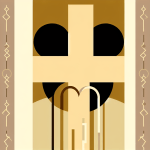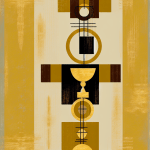The Role of the Virgin Mary in Catholicism
The Virgin Mary holds a central place in Catholicism, revered not just as the mother of Jesus Christ but also as a powerful intercessor, symbol of purity, and model of faith. Understanding her role can deepen one’s appreciation for the Catholic faith and its traditions. In this blog post, we will explore the many dimensions of the Virgin Mary in Catholicism, including her titles, doctrines, contributions to the Church, and the significance of Marian devotion.
Introduction to the Virgin Mary in Catholicism
The Virgin Mary, known as the Theotokos (God-bearer), is one of the most significant figures in Catholic theology and devotion. She is honored with various titles, each reflecting her virtues and roles in salvation history. From the Annunciation to her Assumption, Mary’s life is intertwined with the central tenets of the Christian faith. For Catholics, she is not just a historical figure; she is a living presence through prayer, tradition, and liturgy.
Mary’s Role in Salvation History
Mary’s role in salvation history begins with the Annunciation, where the angel Gabriel proclaimed her as “full of grace.” This moment signifies Mary’s consent and willingness to accept God’s plan, which is foundational in the Catholic understanding of free will and divine grace. By saying “yes” to God, she became the vessel through which Jesus Christ, the Savior, entered the world.
Furthermore, throughout Christ’s life, Mary exemplified the characteristics of a devoted follower. She witnessed key events: Jesus’ first miracle at the Wedding at Cana, his crucifixion, and even his resurrection. Her presence at these pivotal moments highlights her importance not just as a mother but also as a disciple and follower of her son.
The Titles of the Virgin Mary
In Catholicism, the Virgin Mary is honored with numerous titles that reflect her attributes and roles. Some of the most prominent titles include:
- Mother of God: This title emphasizes Mary’s divine motherhood and her role in the Incarnation of Christ.
- Queen of Heaven: Celebrated in various traditions, this title acknowledges Mary’s exalted status in heaven as reigning with her son.
- Immaculate Conception: The belief that Mary was conceived without original sin underlines her purity and suitability to bear the Son of God.
- Our Lady of Sorrows: This title reflects Mary’s suffering and compassion during Christ’s passion and crucifixion, making her a relatable figure for those experiencing grief.
These titles, along with many others, reflect the myriad of ways Mary is honored and prayed to within the Catholic tradition.
Doctrines Regarding the Virgin Mary
Several key doctrines related to Mary are central to Catholic belief:
-
The Immaculate Conception: Defined in 1854, this dogma states that from the moment of her conception, Mary was free from original sin. This concept emphasizes her purity and preparation to be the Mother of Jesus.
-
The Perpetual Virginity: The Church teaches that Mary remained a virgin before, during, and after the birth of Jesus, underscoring her unique role.
-
The Assumption: According to this belief, Mary was assumed body and soul into heaven at the end of her earthly life. This doctrine emphasizes her special status among saints and reflects the Catholic hope for eternal life.
-
Mediatrix of All Graces: Many Catholics believe that Mary intercedes for humanity, mediating graces from her son, Jesus, to those who seek her assistance.
These doctrines not only underscore her significance in the faith but also enhance Marian devotion among the faithful.
Marian Devotion in Catholic Practice
Marian devotion is a vital aspect of Catholic spirituality. Catholics engage in various practices that honor the Virgin Mary, demonstrating her role as an intercessor and a model of virtue. Some common forms of Marian devotion include:
The Rosary
The Rosary is perhaps the most well-known form of Marian devotion. It consists of a series of prayers focused on the life of Christ and the Virgin Mary. By meditating on the mysteries of the Rosary, individuals not only honor Mary but also reflect on the teachings of Christ.
Feast Days
Mary is celebrated on numerous feast days throughout the liturgical calendar. Notable feasts include:
- Feast of the Immaculate Conception (December 8)
- Feast of Our Lady of Guadalupe (December 12)
- Feast of the Assumption (August 15)
These celebrations allow the faithful to reflect on her life and intercede through her for various needs.
Litany of the Blessed Virgin Mary
The Litany of the Blessed Virgin Mary is a powerful prayer recited often in Catholic worship. It lists various titles of Mary and asks for her intercession, allowing believers to express their reverence and fidelity to her role in their spiritual journey.
The Virgin Mary as a Model of Virtue
Mary is considered the ultimate example of Christian virtue and faith. Her life embodies humility, obedience, and love. As the perfect disciple, she teaches Catholics the importance of listening to God and responding to His call.
For instance, her Magnificat, the song of praise found in the Gospel of Luke (1:46-55), reflects her deep faith and trust in God’s plan. In this canticle, she acknowledges God’s greatness and recognizes her humble state, providing a model for believers to follow in their own lives.
Mary’s Influence in Catholic Culture and Art
The Virgin Mary has profoundly influenced Catholic culture and art. From stunning cathedrals filled with Marian iconography to countless works of art depicting her life, Mary serves as a source of inspiration for artists and believers alike. Statues, paintings, and stained glass windows often depict her virtues and moments from her life, making these representations a vital part of the Catholic experience.
The Universal Appeal of Mary
One of the remarkable aspects of the Virgin Mary is her universal appeal across cultures and nations. Different cultures have adapted her image and veneration, creating unique expressions of Marian devotion. For example:
- In Latin America, Our Lady of Guadalupe is a powerful symbol of hope and identity for millions.
- In Poland, Mary is often depicted as Our Lady of Czestochowa, a revered icon associated with miraculous healings.
These adaptations reflect the universality of Mary’s message and her role as a mother to all.
Conclusion
The Virgin Mary plays an integral role in Catholicism, serving as a profound symbol of faith, courage, and maternal love. Through her titles, doctrines, and the various expressions of devotion, the faithful find inspiration and solace. Whether as the Mother of God, a Mediatrix of Graces, or a model of virtue, Mary continues to influence millions of lives, providing a pathway closer to Christ. Understanding the significance of the Virgin Mary enriches one’s appreciation for the Catholic faith and offers a deeper insight into the beauty of devotion and the power of intercession.
As you explore your faith or learn more about Catholic traditions, taking time to understand the role of the Virgin Mary can be a transformative experience, offering peace, guidance, and a renewed sense of purpose in your spiritual journey.




